How to clean forks and spoons at home?
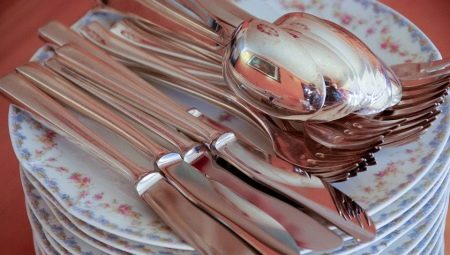
Many housewives have thought more than once about how to properly clean cutlery so that they retain their original appearance for many years.
Today, various manufacturers of cleaning products offer many options for cleaning spoons and forks, however, and they cannot always cope with this task.
How to easily clean a variety of cutlery at home will be discussed in this article.

Cleaning stainless steel appliances
Most people buy stainless steel cutlery because the metal is considered inexpensive and very practical. In addition, a wide variety of cutlery is produced from it.
It is widely believed that stainless steel spoons, forks and knives are highly resistant to rust and corrosion.
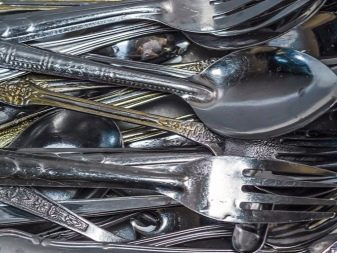
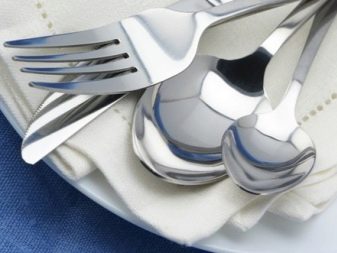
However, this does not mean at all that these devices do not need regular and correct cleaning.
An unpleasant and at the same time ugly plaque on spoons, forks and knives will appear sooner or later, even if they are regularly cleaned after eating.
Very poor water and harsh cleaning agents, as well as other external factors, can adversely affect spoons and forks.
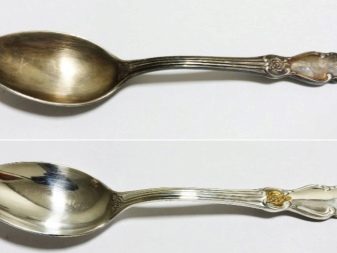
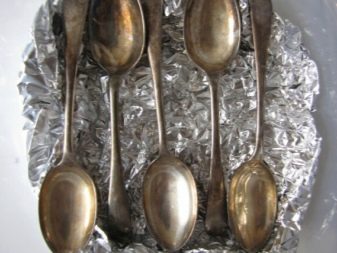
In addition, it is not uncommon for the metal to tarnish and lose its former appearance.
Today, in addition to using standard detergents, there are several other methods of cleaning tableware at home.

To return the former shine to cutlery, as well as to make their "general" cleaning, without leaving your home, you can use the following recipes for cleaning them.
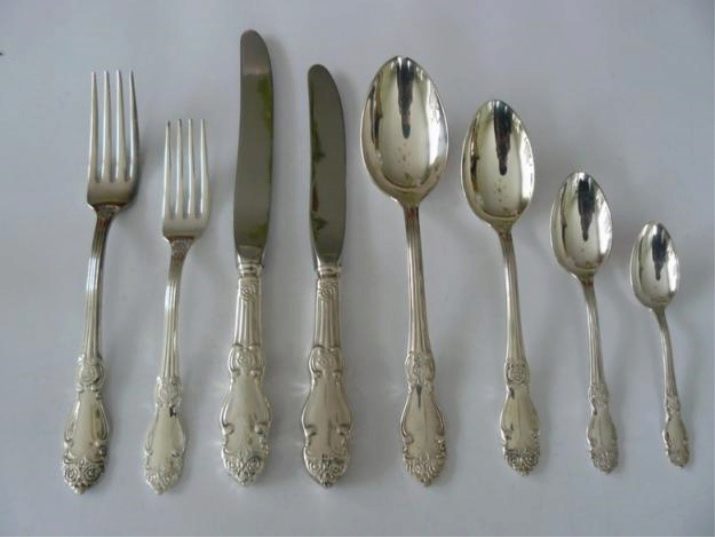
Use baking soda and salt.The combination of these components is quite easy to mix, besides, it will not be difficult to find them in the kitchen, because they are in the arsenal of every hostess:
- to use these components, you need to choose a container that will fit all the spoons and forks for cleansing;
- put foil on the bottom of the container;

- in another container, you need to mix salt and soda one spoon at a time, and also add one liter of warm water. After thorough mixing, pour the resulting solution into a container with foil prepared in advance;
- then we put all the spoons, forks, knives and, in general, any cutlery in the prepared solution, put on the stove and boil for fifteen minutes;
- after the allotted time has passed, the devices should be taken out, washed thoroughly and wiped dry
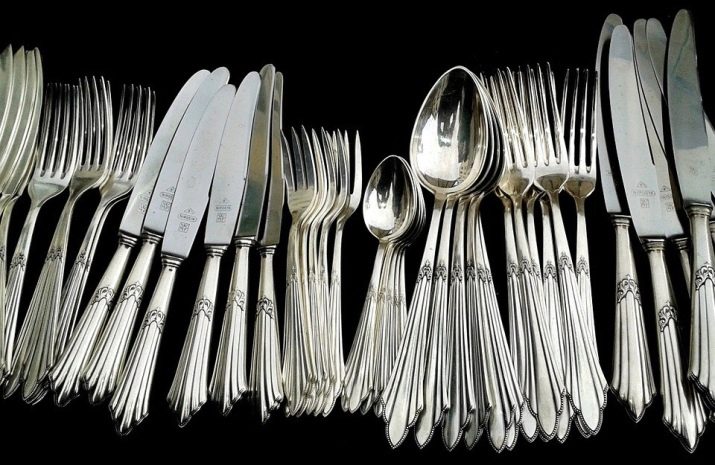
When using a soda solution with salt, it is advisable that it does not completely cover all the products.
It is not uncommon for people to use toothpaste to clean stainless steel items, because thanks to the many components that are included in its composition, any spoons and forks will shine immediately after rubbing them.
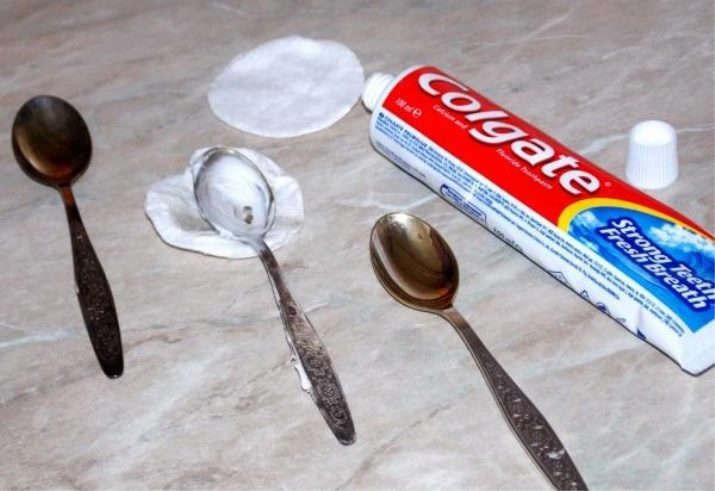
To perform a high-quality cleansing, follow these instructions:
- type a container of hot water, lower the necessary cutlery into it;
- taking out one of the items, with smooth movements using a brush and a paste applied in advance, start cleansing;
- After you clean all the appliances, rinse them with warm water, wipe with a dry towel or cloth.
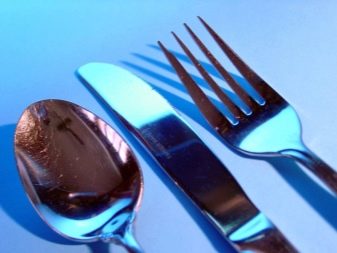

A very effective recipe is the use of plain water and soda in a ratio of 1 to 3. When preparing this recipe, you should get a thick, not too liquid mixture.
This recipe is ideal for removing yellow stains from cutlery. You can rub objects with materials that are convenient for you and even use a regular toothbrush.
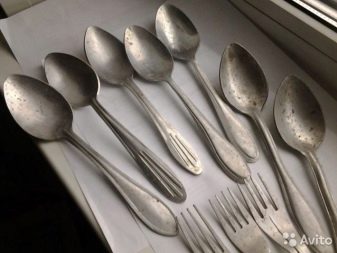

For a long time, housewives have used table vinegar to cleanse forks and spoons, however, when working with this recipe it is very important not to forget to wear protective gloves:
- select a piece of unwanted cloth and soak it in vinegar;
- thoroughly wipe your chosen cutlery with it and leave it for about half an hour, then rinse it under running water.
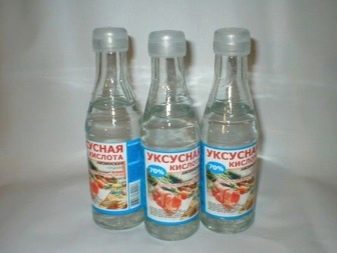
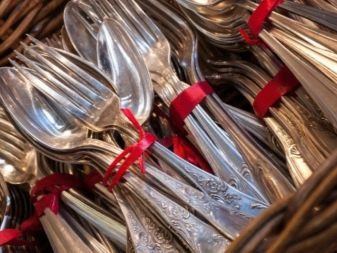
This recipe does not always help to perfectly clean the dirt, however, it will surely return the former shine to the cutlery.
Ugly dark bloom from cutlery can be easily removed using the most common mustard. To do this, follow these steps:
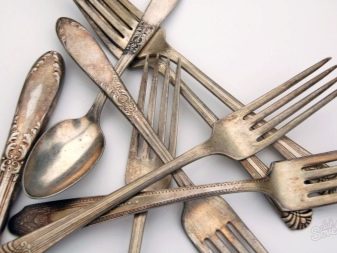
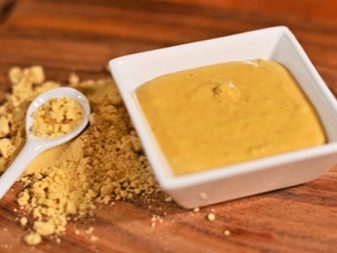
- soda and dry mustard powder must be added to a container with warm water, the components should be added in equal parts;
- after thorough mixing, put the selected cutlery in a container with the ready-made solution for no more than half an hour, the average time is up to 20 minutes;
- after a while, rinse all devices under a pressure of water, and remove the remaining dirt with a sponge or brush.
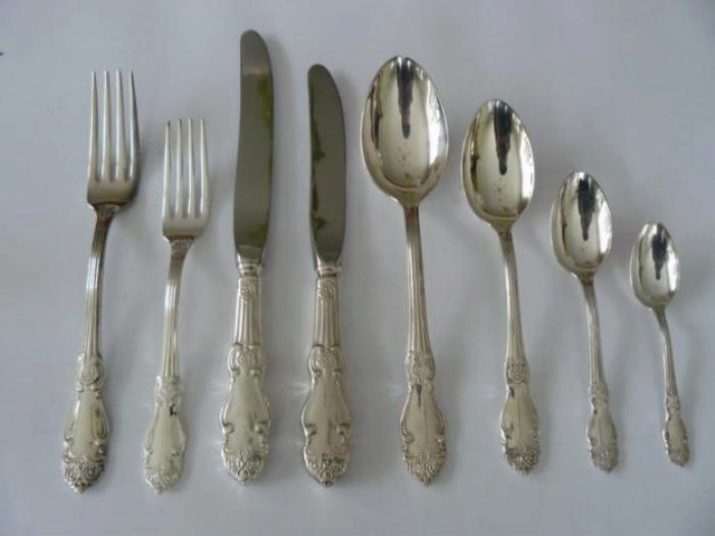
You can also clean cutlery with lemon juice. To do this, you should:
- from a whole lemon or two, squeeze all the juice into a small container;
- moisten a small piece of cloth in juice and wipe the cutlery with it;
- then you should choose another fabric, preferably a woolen flap, and rub it with a fork and spoon until a shine appears.

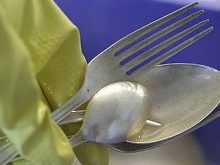
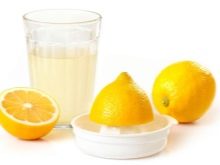
Summing up all the above recipes, it is very important to mention that you should not bring the devices to very heavy contamination.
It is preferable to clean them regularly., thus, each subsequent procedure will take you a minimum of time and effort.
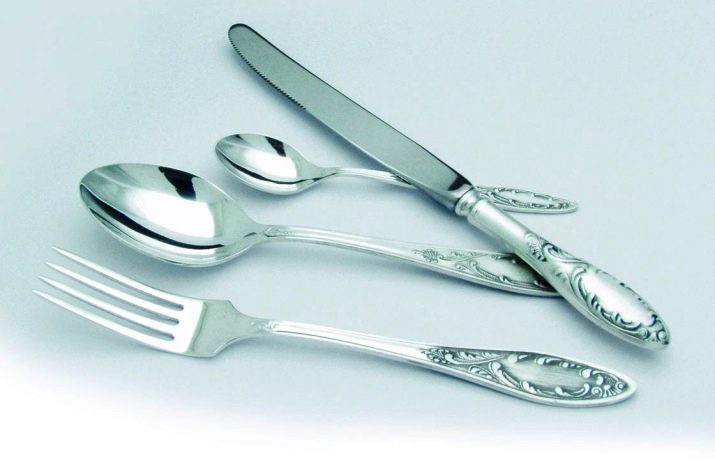
How do I clean silverware?
Silver is exactly that whimsical metal that begins to darken over time. It requires special care for itself, however, it cannot be called difficult, the main thing is to do everything in a timely manner.
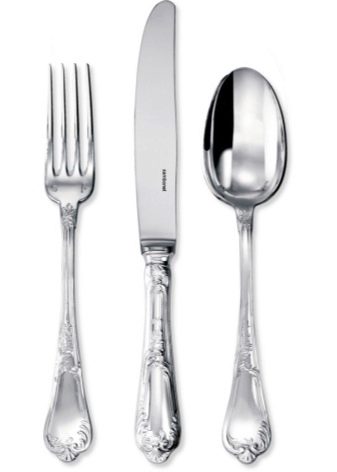
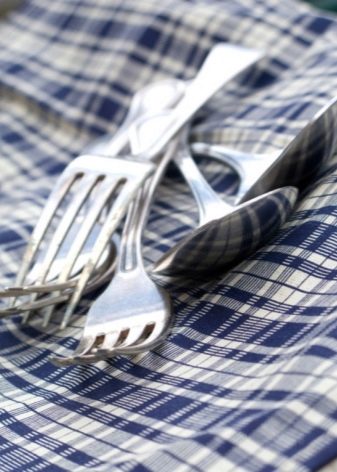
Many of the recipes and ingredients described above are also great for cleansing silverware, including:
- lemon juice or citric acid.Lemon easily removes darkening and haze from silver, restoring its original shine. If you are using citric acid, mix one sachet with one liter of boiled water. Devices in this solution should be left for 15-20 minutes;
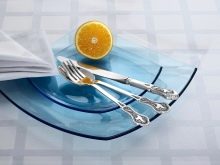
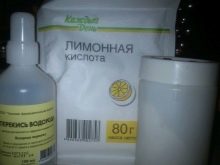
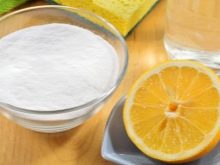
- very often silverware is cleaned with ammonia. Ammonia should be diluted with water in a ratio of 1 to 10, and it is important to leave the devices in this solution for several hours, after which they should be thoroughly rinsed with water and wiped dry;
- it is not uncommon for silver to be refined in the simplest way. Using a regular sponge and soda. Rub the surface with pure soda until all dirt and grease disappear;
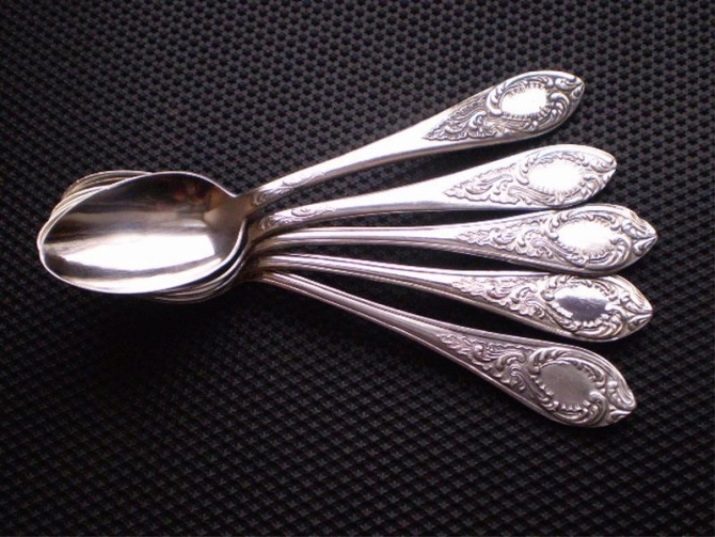
- fine salt can be used to cleanse silver. It is important to mix salt with water in the same proportion of 1 to 1. Also, all appliances should be rubbed with salt with a sponge and only then immersed in an aqueous solution. After a short period of time, the devices should be rinsed under running water and dried dry;
- An effective recipe for cleansing silver cutlery is the use of chalk and ammonia. This recipe is ideal if your forks and spoons have beautiful engravings and designs, as chalk and ammonia won't damage them in any way. It is important to grind the chalk as finely as possible and add alcohol to it, the resulting "porridge" should resemble kefir. Using a piece of cloth, apply this mixture to the cutlery, paying particular attention to areas with contamination, they need to be rubbed. The remains should be washed off with water.
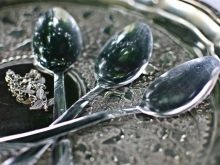

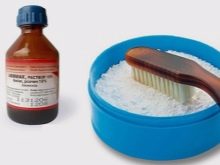
Cleaning cupronickel devices
Many cupronickel is not on hearing, because everyone is used to buying stainless steel. However, cutlery made from this alloy, which includes copper, zinc and silver, is far from uncommon.
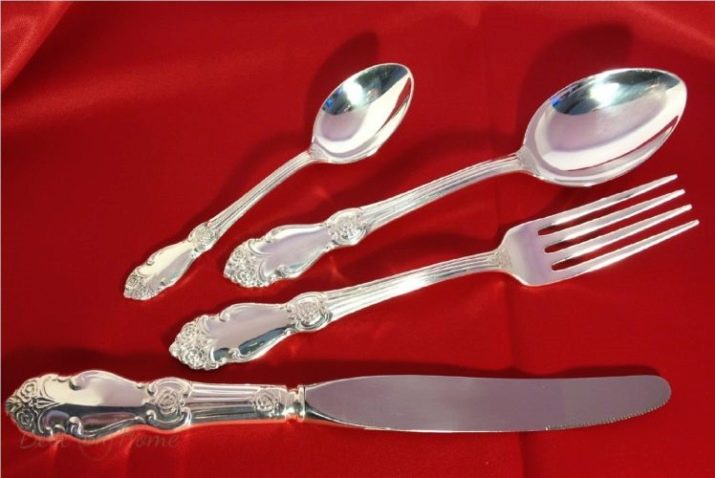
Nevertheless, its popularity has declined compared to previous years, although the alloy is considered to be very strong and wear resistant.
To keep cupronickel spoons, forks and knives shiny as new, it is recommended to use the following recipes to clean them.
A very old, but effective recipe, which was still used by our grandmothers and great-grandmothers, is considered using eggshells and common salt:
- it is very important to grind the shell as finely as possible;
- then pour cool water into a small container;
- boil water. As soon as you see that it begins to boil, you should pour the shell into it and add 1 teaspoon of salt;
- cutlery should be put in the resulting mixture on the stove and left for 5-10 minutes, while the gas does not need to be turned off, the appliances should boil;
- afterwards, the devices should be rinsed under water and wiped dry.
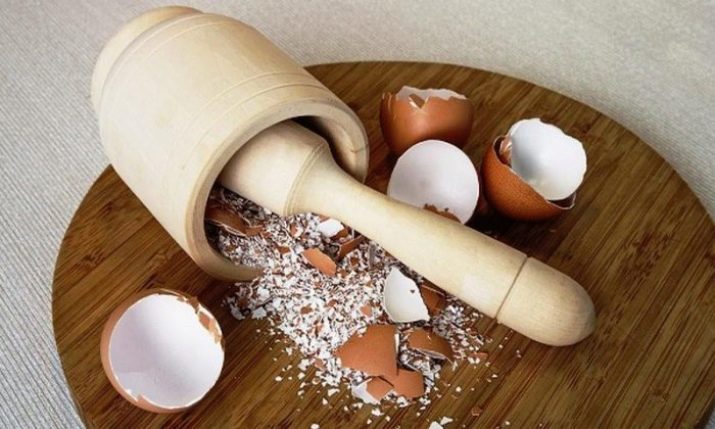
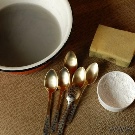
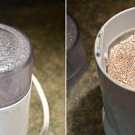
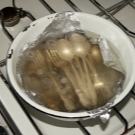
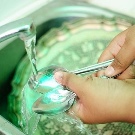
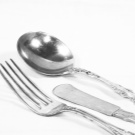
A rather unusual recipe for cleansing cupronickel is the use of garlic peels.

This recipe ideally fights dirt on cutlery, however, it takes a long time to cook:
- it is advisable to collect a large jar of garlic husks, it should be poured with heated water;
- water with garlic should be infused at least all night, and in the morning it should be boiled in a saucepan;
- then cutlery should be placed in this solution and boiled for about half an hour;
- after which it is important to rinse and dry the cutlery thoroughly.

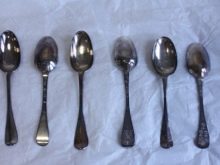

If your cutlery is gold-plated, it is important to clean it as gently as possible. Turpentine is ideal for this process:
- a small piece of cloth should be dipped in turpentine;
- then you should grate the cutlery, paying special attention to problem areas with accumulation of dirt;
- after cleaning, rinse with water and dry.
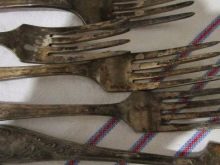
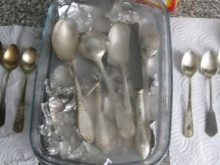
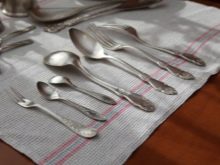
You can remove minor oily stains and restore the former shine of the cutlery using ordinary soap solution. The detergent just needs to be diluted with water and foamed well.
Forks and spoons should be placed in the resulting solution and wiped with a sponge.
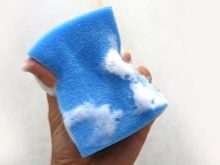
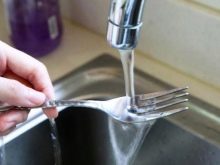
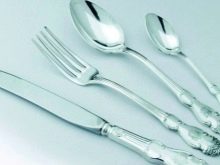
Finally, rinse them under running water.
At home, to clean cutlery, alcohol or vodka is often used, which not only perfectly clean, but they also disinfect metals from a variety of accumulations of dirt and plaque:
- to make the spoons shine again, you should soak a cotton pad or a piece of cloth in alcohol and rub the cutlery with it, especially those places that are most prone to dirt;
- if the dirt is very strong, you should wipe them with a sponge and only then rinse the devices under water.
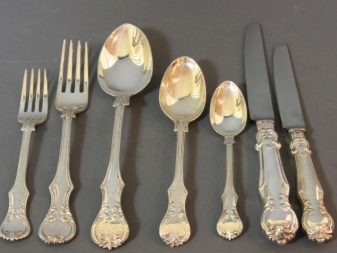

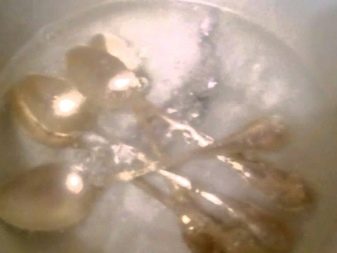

Professional advice
Of course, today few people use the old methods of cleaning cutlery, all use detergents. However, even they cannot fully clean aluminum and silver items.
All of the above funds are considered completely safe, in contrast to ready-made options, the composition of which is not always clear to us.
Either we use ordinary soda and salt to clean forks and spoons, which do not bring any harm not only to tableware, but also to our hands.
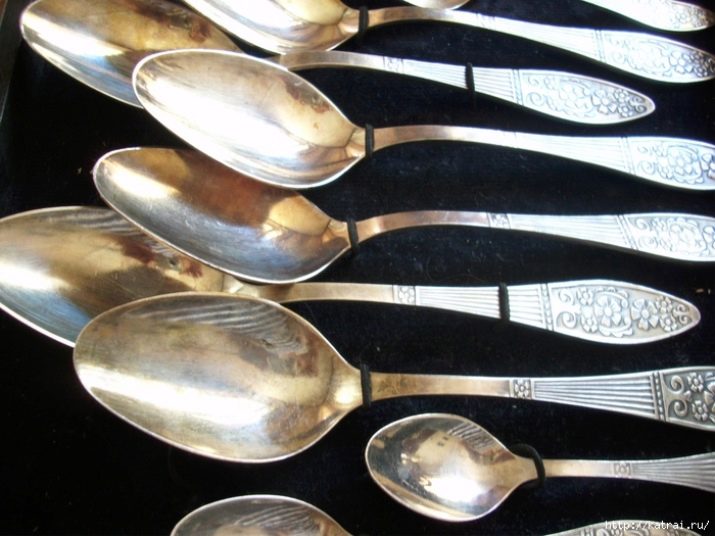
Whichever method of cleansing you choose, you will not be disappointed. However, do not forget that solutions by themselves cannot remove absolutely all contaminants, and sometimes you still have to apply some effort to rub the cutlery.
Cleaning the tableware can be very painstaking, and sometimes even many housewives consider it tedious, since it can be difficult to wash all the cutlery to a shine. And you won't be able to do everything quickly.
The most important thing is not to run your spoons, forks and knives to such a state that they will not only have to be boiled, but also rubbed several times.
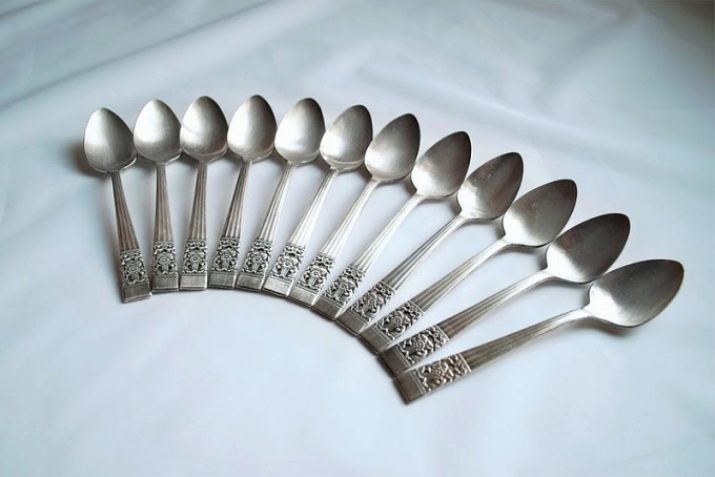
Also, so that cleaning is not in vain, do not forget that after any cleaning it is important to rinse the cutlery and wipe it thoroughly with a dry cloth. It is the excessive moisture that causes the cutlery to darken over time.
For information on how to clean forks and spoons at home, see the next video.








